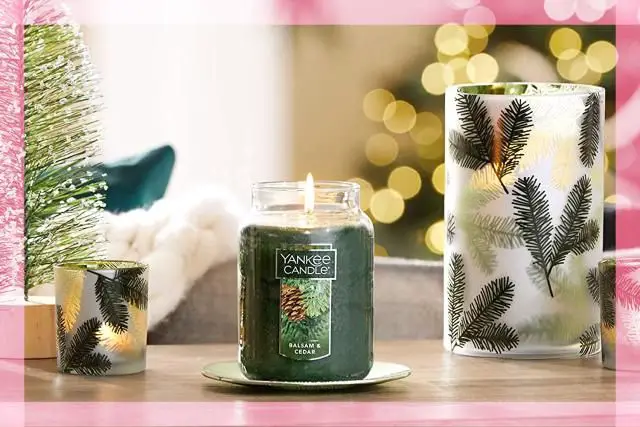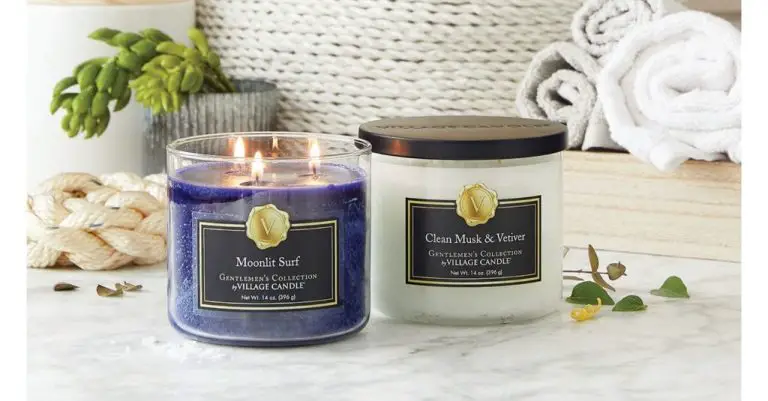What Industry Is Candle Making Considered?
Candle making is the process of creating candles by hand or through industrial mass production. It is considered part of the craft industry and small-scale candle making can be a hobby, artistic endeavor, or small business.
The candle making industry involves everything from the sourcing of waxes and fragrances to the design and production of the finished candle products. Major manufacturers utilize automation and technology while individual artisans practice the ancient technique of crafting candles by hand.
While candles are used primarily for lighting and home décor today, they served critical functions before electricity, providing illumination and heat. The candle industry has continued adapting to new technologies while maintaining the tradition and artistry of candle making, keeping it relevant in the modern world.
History of Candle Making
The history of candle making dates back thousands of years. Candles have been an important source of light and have had cultural and spiritual significance across many civilizations throughout history.
Some of the earliest forms of candle making used tallow, which is derived from animal fat. Ancient civilizations like Egypt, Rome, and China made candles by repeatedly dipping wicks in melted tallow. Beeswax was also used in candle making as early as 3000 BC. Ceramic oil lamps were the candles of ancient Greece, Rome, India, Africa and the Middle East.
In Europe during the Middle Ages, candle making evolved from primarily being a profession of the clergy to an organized guild craft. Techniques for refining beeswax and manufacturing tallow candles improved. Molds were used to create uniform candle shapes and sizes.
The Industrial Revolution brought even more advances to candle making, with techniques emerging for distilling paraffin from petroleum and using stearin from animal fats. This allowed for higher production and more affordable candles. In the mid 19th century, paraffin largely replaced animal-based tallow as the primary candlemaking material.
Today, while paraffin is still commonly used, there has been renewed interest in natural beeswax candles and vegetable-based waxes like soy, palm and bayberry. Candle making has advanced to utilize various wicks, dyes, scents and molds to create candles for ambiance, therapy, religious ceremonies and more.
Market Size
The global candle market was valued at $11.9 billion USD in 2020 and is expected to reach $15.3 billion by 2027, growing at a CAGR of 4.2%. The key factors driving this growth are increasing demand for scented candles and home décor items, growth of the gifting market, and rising disposable incomes globally.
North America and Europe are the largest regional markets for candles, accounting for over 60% of the global market share. However, emerging economies in Asia Pacific are experiencing rapid growth due to rising populations, growing middle class, and increasing consumerism. China, India, Japan, South Korea, and Australia are key markets to watch in the Asia Pacific region.
Within Europe, Germany, France, the UK, and Russia hold significant portions of the market. In North America, the largest national markets are the United States and Canada. There is still room for penetration and growth across both developed and developing markets as candles remain a globally popular household and gifting item.
Key Players
The candle making industry has both major manufacturers as well as many small businesses and hobbyists.
On the manufacturing side, some of the major players include Yankee Candle, Bath & Body Works, and S.C. Johnson & Son (Glade). These large companies mass produce candles and sell them in retail stores around the world. They invest in research and development to create innovative new candle scents and formulas. Their manufacturing facilities are highly automated and optimized for efficiency.
Beyond the major manufacturers, there are thousands of small businesses engaged in candle making. These are often “mom and pop” shops producing candles by hand in small batches. Many are focused on natural, eco-friendly ingredients and creative scents. They sell at local craft fairs, farmers markets, and online stores. This segment brings personal customization and artisanship to the market.
Finally, there are many hobbyists who make candles as a creative outlet and for personal use. They learn techniques online or from books and experiment with different waxes, wicks and scents. These candle makers get satisfaction from the DIY process and gifting their homemade creations.
Together, the major manufacturers, small businesses and hobbyists comprise the key players propelling growth and innovation in the candle making industry.
Products
Candles come in a wide variety of shapes, sizes, colors and scents. There are many different types of candles produced by the candle making industry:
- Pillar candles – These tall, cylindrical candles are the most common shape.
- Taper candles – Long, thin candles used in candelabras.
- Votive candles – Small candles in containers, popular for home decor.
- Tealight candles – Tiny candles encased in thin metal cups.
- Container candles – Candles poured into glasses, jars, tins or other holders.
- Floating candles – Candles designed to float on water.
- Gel candles – Clear, gel-like candles with embeds and glitter.
- Scented candles – Candles containing fragrance oils.
There are specialty candles as well as basic, plain candles. Specialty candles may have decorations, inclusions, shapes or scents. Plain candles are unscented and have a basic shape. Materials used to make candles include wax (paraffin, soy, beeswax, gel), wicks and candle dyes/fragrances. The specific materials determine the quality, burn time, scent and price of the finished candle.
Manufacturing Process
Making candles is a multi-step process that requires attention to detail and safety at each stage. Here is an overview of the typical manufacturing process:
Cleaning and Preparing the Wax
The first step is to clean and prepare the wax. Raw wax often contains impurities, so it must be filtered to remove debris. The wax is heated in a melting pot to liquefy it and enable filtering. Next, dyes, scents, and other additives are blended into the hot wax as desired.
Preparing the Wick
Candle wicks are typically made of braided cotton. The proper wick must be selected based on the type of wax and desired candle burn rate. Wicks are cut to size and attached to the bottom of the candle mold or container. This keeps them centered when pouring the wax.
Pouring the Wax
Once the wick is set, the melted wax is carefully poured into the mold or container. The wax is poured at the proper temperature to ensure smooth setup. The maker may layer different colored waxes to create a visual effect.
Cooling and Curing
The candles are set aside to fully cool and cure, which may take up to 48 hours. This allows the wax to completely harden and the finished candles to release easily from the molds.
Finishing Steps
The final steps include trimming the wick to size, adding a wax seal if needed, attaching a label, and packaging the candle for sale or use.
Safety Tips
Proper precautions are essential when making candles. Always work in a well-ventilated area, wear protective gear, only use candle-making equipment, avoid spills or burns, and carefully extinguish all flames before leaving the workspace.
Distribution
Candle makers have a few main options when it comes to distributing their products. Here are the primary channels used:
Retail Channels
Many candle makers distribute through retail stores. This includes small boutiques, gift shops, home décor stores, and large chains. Retail stores allow candle makers to reach local customers and get their products on physical shelves. However, retail takes a cut of sales and may require upfront inventory purchases. Makers have to weigh the benefits of foot traffic and visibility against lower profit margins.
Online Sales
Selling candles online has become very popular. Many candle makers set up their own ecommerce sites to sell directly to customers across the country. Online marketplaces like Etsy, Amazon, and eBay also enable candle sales. These sites provide exposure but also take a commission. Makers have to consider if the fees make sense for their business model and product pricing.
Direct-to-Consumer
Some candle makers focus on direct-to-consumer sales through their own website and channels. This allows them to retain more profit margin and control the customer experience. However, it also requires more marketing efforts to drive traffic. Makers may focus on SEO, social media, email marketing, and other tactics to attract direct buyers.
Challenges
The candle making industry faces some key challenges that impact its growth and profitability. Competition is one major challenge, as the industry is fragmented with many small and large players. This makes standing out difficult, and competing on price alone can erode profit margins. Raw material costs, especially for wax and fragrance oils, can fluctuate and squeeze margins as well. Keeping up with regulatory issues is another hurdle, as candle makers must ensure their products meet safety standards for fire risk, labeling, testing, and other regulations that vary across regions.
On the competition front, the industry is very saturated at the low end with private label and mass-produced candles. Mid-range and luxury candles have seen lots of new entrants in recent years too. Candle makers must focus on unique value propositions, like distinctive designs, scents, or ingredients to differentiate. Market positioning and branding is key. On raw materials, wax and fragrance are subject to commodity pricing, and spikes can quickly hit bottom lines. Securing good supplier contracts and hedging against pricing swings is crucial. And in terms of regulations, candle makers have to diligently follow laws on fire safety issues like wick standards and lab testing for lead content. Labeling and warning requirements vary as well, and non-compliance can lead to lawsuits or recalls.
Trends
The candle industry has seen some interesting trends emerge in recent years as consumer demands and preferences evolve. Some of the biggest trends include:
Customization
Consumers increasingly want the ability to customize their candles, whether it be choosing their own scents, colors, container styles, or designing their own labels. Many candle companies now offer more customization options or even allow customers to create their own personalized candles from scratch.
Natural Materials
There is a growing demand for candles made from natural, sustainable materials like soy, beeswax, and coconut wax. Consumers want to avoid paraffin wax and other petroleum-based ingredients. Essential oils and natural fiber wicks are also gaining popularity over synthetic fragrance oils and wire-core wicks.
Scent Trends
On the scent front, consumers are moving beyond just floral and food-inspired scents. There is increased interest in complex, luxury scents like oud and exotic florals. Seasonal and limited-edition scents also continue to be popular. CBD and cannabis-inspired scents are an emerging trend as well.
Conclusion
In summary, candle making is considered part of the craft and hobby industry as well as the creative goods and design sector. Key points discussed include:
- Candle making has a long history dating back thousands of years.
- The global candle market is estimated at over $11 billion annually and growing.
- Major manufacturers include companies like Yankee Candle, Bolsius, and Colonial Candle.
- Candles come in various forms like tapers, pillars, containers, etc. using materials like paraffin, soy, beeswax.
- Candle production involves multiple steps like preparing the wicks, melting wax, adding fragrance, and pouring into molds.
- Candles are sold through craft stores, gift shops, online retailers, and other outlets.
- Challenges in the industry include pricing pressures and competition from alternative light sources.
- Sustainability and natural ingredients are key trends gaining traction.
Candle making allows artisans to express their creativity through scents, colors, shapes, and designs. It is an outlet for craftspeople to use their skills in a rewarding way. Though it faces competitive pressures, candle making persists as a beloved creative industry producing items that add beauty, fragrance, and ambiance to people’s lives.




